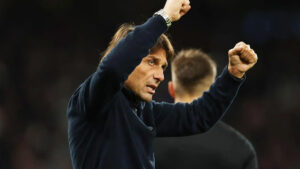A few evenings ago, I watched the film that tells the story of the birth of McDonald’s. It’s a narrative that offers much more than just a tale about one of the largest giants in the global food industry. It is the story of a vision, a brilliant idea, and above all, the resilience of a man, Ray Kroc, who managed to transform a small fast-food restaurant, albeit with unique characteristics, into a global empire.
As you probably know, although the concept of fast food was originally conceived by the McDonald brothers, it was Kroc who brought it to a global scale, demonstrating that having an idea is not enough; you must also be able to develop it and believe in it wholeheartedly to succeed.
I thought I would write this article to explore the history of McDonald’s and the journey of its founder, trying to draw lessons and insights that are applicable not only in the business world but also in the personal and professional lives of each of us.
Three fundamental aspects emerge from Ray Kroc’s story: visionary ability, resilience, and risk management. Each of these aspects contributed decisively to his rise, but it is the way they intertwine that makes his journey so interesting and rich in inspiration.
Visionary Ability: Seeing Big Starting From Small
One of the most powerful lessons from Kroc’s story is his ability to see a huge opportunity where others only saw a successful yet limited business.
The McDonald brothers had founded a restaurant based on speed and efficiency, a revolutionary concept for the time. Kroc, however, saw something more in that small fast-food outlet. He glimpsed the possibility of expanding that model globally, transforming their restaurant into an international chain. This ability to “see big” from a small idea, seeking a concrete solution to create it, is one of the keys to his success.
This vision was not limited to the product but also extended to the business model. While many might have thought that the main profit came from selling hamburgers, Kroc relied on a financial consultant who suggested focusing on the real treasure: the real estate sector.
McDonald’s didn’t just sell hamburgers; it bought the land on which its restaurants were built, thereby creating a revenue stream that would last over time, regardless of the success or failure of individual outlets. This was the real stroke of genius that demonstrated his ability to see beyond the conventional thinking of anyone else.
Resilience: A Journey to Success After 50
Another crucial aspect that truly fascinated me about Ray Kroc’s story is his resilience.
Many entrepreneurs and great innovators achieve success at a young age, especially in the American market. This can lead some to think that there is a limited time frame to succeed in life. However, Kroc began his journey with McDonald’s at 52 and reached his greatest milestone at 59, demonstrating that it is never too late to realize your dreams!
His story is a perfect example of how perseverance is often the difference between those who succeed and those who fail. Kroc faced several failures in his life before discovering McDonald’s, but he continued to seek the right opportunity, driven by his vision to create something great and make a difference with an innovative product.
This ability to move forward despite failures, criticism, and even personal difficulties, such as the end of his marriage, is a common trait among many great entrepreneurs. His tenacity in not giving up, even when everything seemed against him, is perhaps the most powerful lesson we can draw from his experience.
Many of us feel overwhelmed by the pressure of time; I myself struggled with turning 40 for a long time, thinking that if success is not achieved by a certain age, opportunities will fade away. But Kroc’s story teaches us the opposite: the real game is played over the long distance, with consistency, not speed.
Risk Management: The Courage to Bet Everything
Another aspect that clearly emerges from Ray Kroc’s story is his ability to manage risk, a characteristic often underestimated in the entrepreneurial world. Kroc demonstrated extraordinary courage when he decided to mortgage his home to finance his vision. This was not just a financial gamble but a personal risk that could have cost him everything.
This kind of audacity is often what distinguishes successful entrepreneurs from those who fail to break through. I have always believed that you cannot build something great without taking risks: it is the ability to manage these risks wisely that makes the difference. Again, I find that Kroc managed to balance risk-taking with a precise strategy, thanks in part to collaborating with people who helped him see the business from a different, unconventional perspective.
It is interesting for me to note how his story differs from a more “European” mentality, which is often more cautious and risk-averse. A mindset that views “failure” as a tomb.
The American mentality, on the other hand, rewards those who are willing to bet everything to realize their dream. Kroc risked his marriage, his home, and everything he had, but he knew that the potential for success was enormous. He felt it for McDonald’s, much more than in all his previous experiences.
His courage reminds us that sometimes it is necessary to make radical and bold decisions to achieve extraordinary goals.
When Vision Meets Determination, The Path to Success is Just Around the Corner
I find that the story of Ray Kroc and McDonald’s is not just a tale of entrepreneurial success, but a vivid example of how vision, resilience, and risk management can transform an idea into a global empire. His ability to see opportunities where others saw only limits, his courage and propensity for risk, his willingness to change course, and his tenacity in overcoming failures and personal obstacles are lessons that every aspiring entrepreneur should learn.
Even though many might criticize the way he “outsmarted” the McDonald brothers by taking their idea and turning it to his advantage, the fact remains that without his vision and courage, McDonald’s would not be the giant it is today. Sometimes, true skill lies not in having an idea, but in knowing how to develop it, believe in it, and bring it to its fullest expression.
For anyone looking to build something great, regardless of age or circumstances, Ray Kroc’s story offers a fundamental lesson: it is never too late to believe in your vision and turn it into reality.











